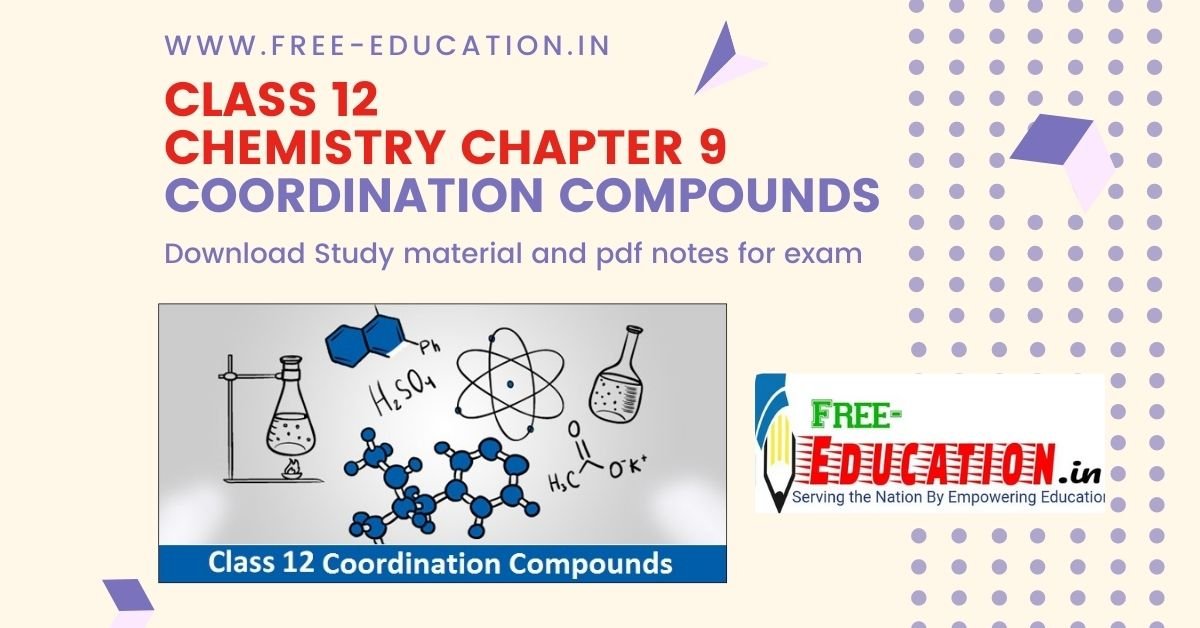2 Marks Questions
1.Explain the synergic bonding in metal carbonyls.
Ans. The metal – carbon bond in metal carbonyls has both s & P- character. The M – C bond is formed by donation of lone pair of electrons of carbonyl carbon into a vacant orbital of metal. The M – C bond is formed by the donation of a pair of electron from a filled d- orbital of metal to the vacant orbital of carbon monoxide. The metal to ligand bonding creates a synergic effect that strengthens the bond.
2. Give some example showing importance of complexes in biological system?
Ans. Examples of complexes in biological system.-
1. Chlorophyll is a complex of Mg.
2. Haemoglobin is a complex of iron.
3. Cyanocobalamine , Vit, is a complex of cobalt.
3.Give examples of complexes in
a) Chemical analysis
b) Industrics
Ans. (a) Chemical analysis –
Qualitative and Quantitative analysis methods involve use of Ligands like EDTA, DMG etc.
(b) Industries.
Hydrogenation of alkenes is done by using a sodium complex called Wilkinson catalyst. In black and white photography, silver complexes are used.
4.Distinguish between homoleptic and hetroleptic ligands.
Ans.Homoleptic complexes are those in which only one type of ligand or donor group is present e.g. has only as ligand. Whereas hetroleptic complexes are those in which different types of ligands are present eg. has two type of ligands- NH3 and Cl–.
5.What are the different shapes or coordination polyhedra in the complexes?
Ans. The various coordination polyhedra are –
6.What is the difference between a double salt and a complex? Explain with an example.
Ans.Double salts dissociate completely into simple ions when dissolved in water e.g., Mohr salt, , will dissolve in water and give ferrous, ammonium and sulphate ions. On the other hand, the complex ions do not completely dissociate into all constituent ions e.g.] will dissociate to give potassium ions and ions only.
7.Predict the number of unpaired electrons in the square planar ion.
Ans.
In this complex, Pt is in the +2 state. It forms a square planar structure. This means that it undergoes hybridization. Now, the electronic configuration of Pd(+2) is .
being a strong field ligand causes the pairing of unpaired electrons. Hence, there are no unpaired electrons in .
8.Write all the geometrical isomers of and how many of these will exhibit optical isomers?
Ans.
From the above isomers, none will exhibit optical isomers. Tetrahedral complexes rarely show optical isomerization. They do so only in the presence of unsymmetrical chelating agents.
9.What is spectrochemical series? Explain the difference between a weak field ligand and a strong field ligand.
Ans.A spectrochemical series is the arrangement of common ligands in the increasing order of their crystal-field splitting energy (CFSE) values. The ligands present on the R.H.S of the series are strong field ligands while that on the L.H.S are weak field ligands. Also, strong field ligands cause higher splitting in the d orbitals than weak field ligands.
10.A solution of is green but a solution of is colourless. Explain.
Ans.In , is a weak field ligand. Therefore, there are unpaired electrons in . In this complex, the d electrons from the lower energy level can be excited to the higher energy level i.e., the possibility of d – d transition is present. Hence, is coloured.
In , the electrons are all paired as is a strong field ligand. Therefore, d-d transition is not possible in . Hence, it is colourless.
11. and are of different colours in dilute solutions. Why?
Ans.The colour of a particular coordination compound depends on the magnitude of the crystal-field splitting energy, . This CFSE in turn depends on the nature of the ligand. In case of and , the colour differs because there is a difference in the CFSE. Now, is a strong field ligand having a higher CFSE value as compared to the CFSE value of water. This means that the absorption of energy for the intra d-d transition also differs. Hence, the transmitted colour also differs.
12. Discuss the nature of bonding in metal carbonyls.
Ans.The metal-carbon bonds in metal carbonyls have both and characters. bond is formed when the carbonyl carbon donates a lone pair of electrons to the vacant orbital of the metal. Abond is formed by the donation of a pair of electrons from the filled metal d orbital into the vacant anti-bonding orbital (also known as back bonding of the carbonyl group). The bond strengthens the bond and vice-versa. Thus, a synergic effect is created due to this metal-ligand bonding. This synergic effect strengthens the bond between CO and the metal.
13.The oxidation number of cobalt in is
(i) +1 (ii) +3
(iii) -1 (iv) -3
Ans.We know that CO is a neutral ligand and K carries a charge of +1.
Therefore, the complex can be written as . Therefore, the oxidation number of Co in the given complex is -1. Hence, option (iii) is correct.
14.Amongst the following, the most stable complex is
(i) (ii)
(iii) (iv)
Ans.We know that the stability of a complex increases by chelation. Therefore, the most stable complex is .
Mohd. Sharif Qualification: B.Tech (Mechanical Engineering) [Founder of Wisdom Academy] [Aim Foundation & Free-Education.In] [Engineer By Profession | Teacher By Choice] [Blogger, YouTube Creator]






